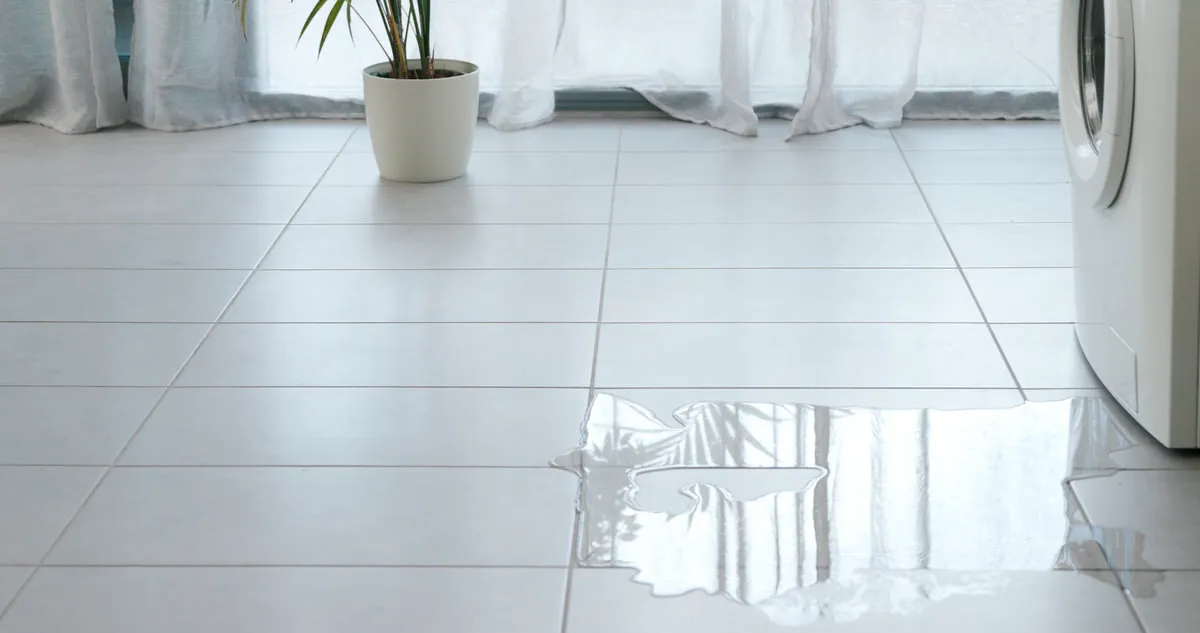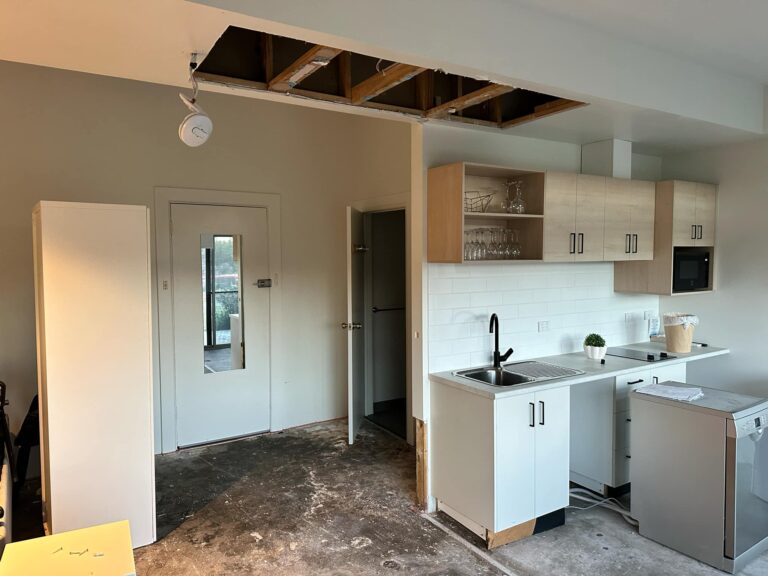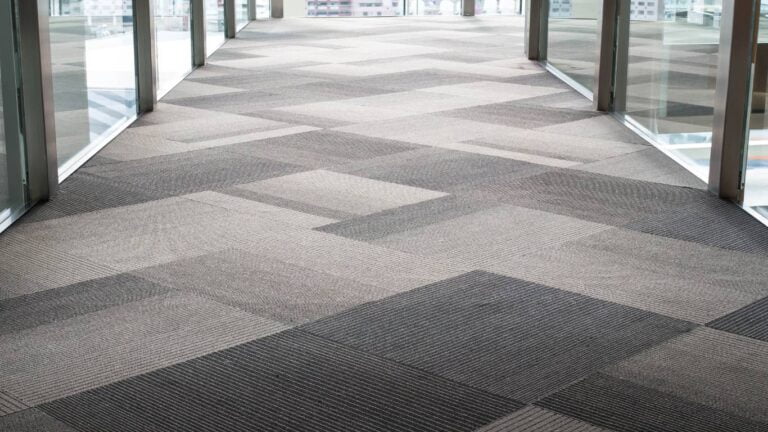When disaster strikes, water damage can wreak havoc on your properties, leading to potential financial and health risks. By getting to know water restoration techniques and prevention measures, you’re taking steps to safeguard your property and health. This comprehensive guide will walk you through the process of water restoration, the benefits of hiring professional water damage restoration services, and effective ways to prevent water damage. You’ll get to know the causes and types of water damage, and learn about the tools and technologies used in water restoration. This guide will arm you with the knowledge you need to make informed decisions. So, let’s get started on ‘Preventing Water Damage in Your Home or Business’ to help you minimise the risk of water damage and save you from the hassle of property loss and expensive repairs.

Understanding Water Restoration
The Fundamentals of Water Restoration
Water restoration is a process used to return a property to its original state before water damage occurred. It involves a thorough inspection of the property to assess the extent of the damage. Excess water is then removed, followed by dehumidification to eliminate moisture from walls, floors, and furniture. The property is then sanitised to remove harmful contaminants such as bacteria and mould. In some cases, reconstruction may be necessary to repair structural damage caused by the water.
The Importance of Water Restoration
Dealing with water damage promptly is crucial to prevent further structural damage and potential health risks. Water damage can lead to the growth of mould, bacteria, and pests, which can pose serious health hazards if not addressed quickly. Additionally, water damage is the second most common insurance claim, after wind and hail damage, highlighting its frequency and potential financial implications. Therefore, understanding water restoration techniques can save you money and protect your health.
The Types of Water Damage
The Institute of Inspection, Cleaning and Restoration Certification (IICRC) classifies water damage into three categories. Category 1 refers to clean water from sanitary sources such as broken pipes, rainwater, and toilet tanks. This type of water damage is typically not harmful as it does not contain contaminants. Category 2 involves significantly contaminated water, such as discharge from dishwashers or washing machines, toilet bowl overflow with urine, and hydrostatic pressure seepage. Ingesting this type of water can cause illness. Category 3 is the most severe type, involving grossly contaminated water like sewage, rising floodwaters, and seawater. Ingesting this type of water can lead to severe illness or even death.
Common Causes of Water Damage
Water damage can occur for various reasons. Some common causes include condensation from air conditioning units, natural disasters, malfunctioning household appliances, clogged drains and gutters, septic tank and sewer backups, burst or leaking pipes, old or faulty water heaters, damaged sprinkler systems, water overflow from toilets, and inefficient roof water drainage. Signs of water damage can include visible puddles of water, swollen or warped materials, cracks on the ceiling or walls, peeling or bubbling paint, musty or damp odors, sagging or soft spots, structural damage, the presence of mould or mildew, and water stains.
To prevent potential water damage, it is important to be vigilant for leaks and regularly inspect your home’s infrastructure, including pipes, faucets, and appliances. Gutters, often overlooked, play an important role in directing water away from your property, so it is essential to ensure they are not clogged. In areas prone to flooding or heavy rainfall, preventive measures such as installing sump pumps or using sandbags can help minimise damage. Investing in water alarms can provide early warning by detecting moisture levels and detecting leaks at an early stage. Regular maintenance routines, such as checking for wear and tear and ensuring all systems are functioning properly, can help prevent potential water-related hazards. Lastly, having a well-prepared emergency response plan, including knowing how to quickly shut off your water supply, is crucial in case of a water damage emergency.
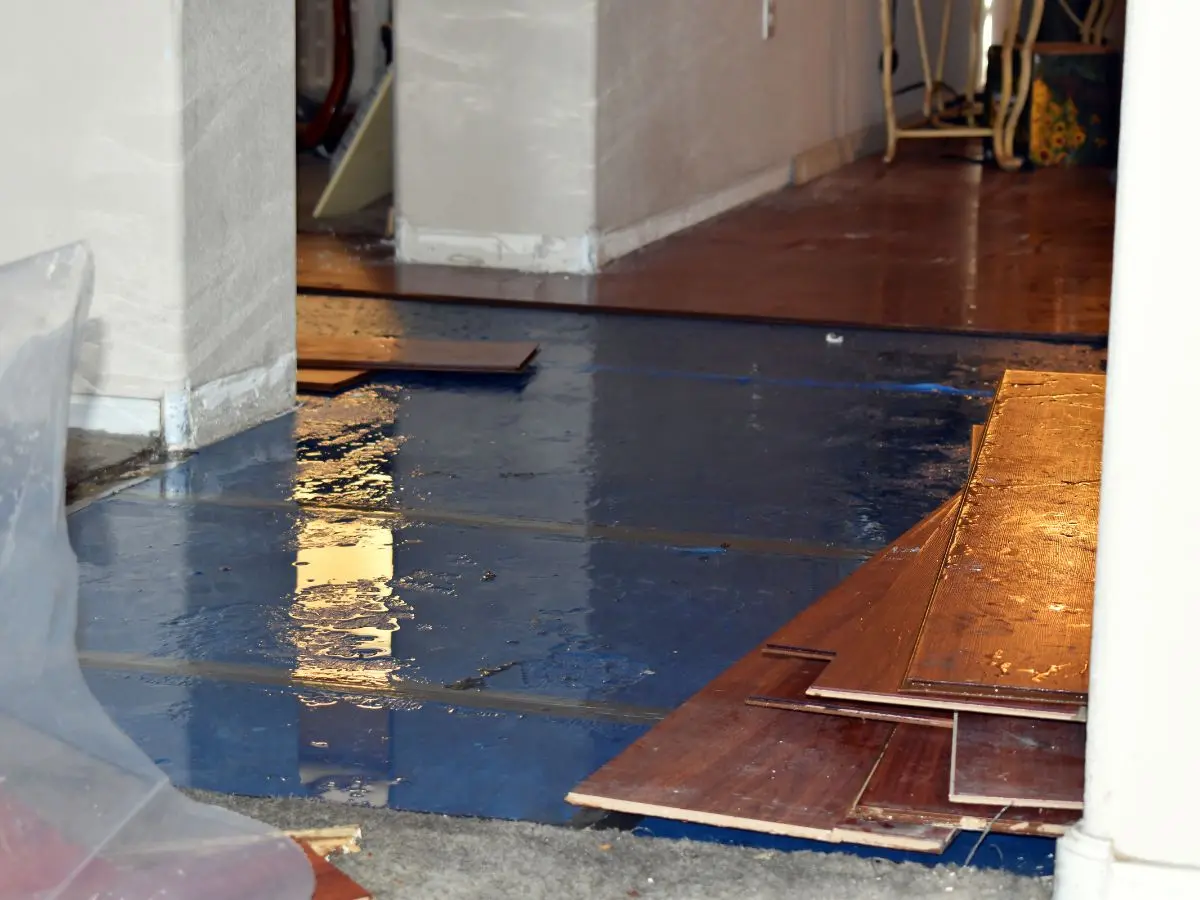
Water Restoration Process
This process is a meticulous, multi-phase operation that requires precision and expertise.
Initial Inspection and Damage Assessment
The journey commences with a comprehensive evaluation and damage assessment. This phase involves pinpointing all areas impacted by water and gauging the extent of the structural damage. Moisture detectors are employed to quantify the level of damage and project the amount of work required. The inspection will classify the damage and the water contamination category.
During this phase, it’s crucial to document the water damage and capture photographs for insurance claims. Public adjusters can be invaluable here. They assess the damage, liaise with the insurer, and submit claims reports.
Water Removal and Drying Process
Following the initial assessment, the water removal and drying process begins. This involves utilising equipment like pumps and vacuums to extract standing water. Ventilation plays a pivotal role in the drying process, and professional restoration companies can provide the necessary equipment and expertise.
If the volume of water flooding into your property is overwhelming, it’s time to engage a water damage emergency company. While awaiting their arrival, there are certain steps you can take to help mitigate damages.
Cleaning and Dehumidification
Once the water has been extracted, the next phase is cleaning and dehumidification. This is crucial to prevent mould proliferation, which can be detrimental to health. Mould testing is essential to ascertain the presence and quantity of mould spores.
The cleaning process also ensures the space is safe and free from bacteria. It’s worth noting that water damage can lead to various health risks from biological contaminants.
Reconstruction and Restoration
The final phase in the water restoration process is reconstruction and restoration. This involves repairing any structural damage and restoring the property to its pre-damage condition.
Rebuilding after water damage can take anywhere from four months to a year, depending on the extent of the damage. It’s important to choose a water damage company that’s been in business for a while and has many references.
Keep in mind, water damage restoration services are usually billed to your insurance company when work needs to be done at your home or business. The billing cycle can take anywhere from 30 to 60 days depending on the insurance company and the water restoration company.
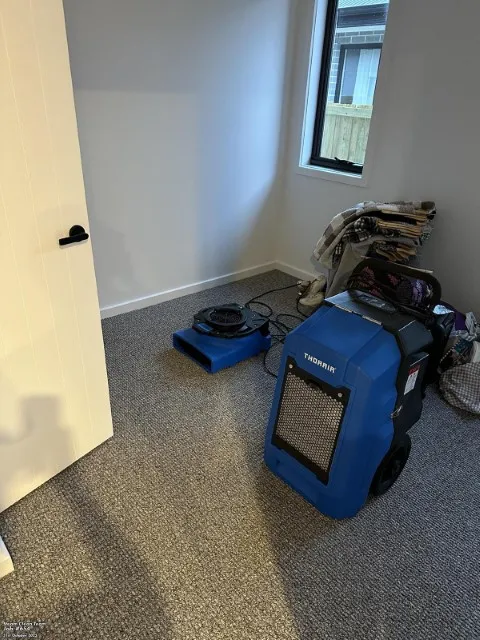
Tools and Equipment for Water Restoration
In the process of water damage restoration, a variety of specialised tools and equipment are employed. These include high-capacity pumps and vacuums, moisture detection devices, and hygrometers, all of which are essential in managing the aftermath of water damage.
Industrial Strength Pumps and Vacuums
High-capacity pumps and vacuums, such as the PF85DX Powr-Flite The Gulper II Flood Pump Extractor or the Nilfisk-Alto 751-61 Wet Pick Up And Pump Out Vacuum Cleaner, are designed to handle large volumes of water swiftly and effectively. These machines are particularly useful in situations where a substantial amount of water needs to be removed, such as following a flood or a significant leak. Their ability to pump water at a rate of 200 litres per minute makes them indispensable for rapid water extraction.
Moisture Detectors and Hygrometers
Moisture detectors and hygrometers are essential for identifying and quantifying the humidity levels in your property. These devices have seen significant advancements over time and can provide accurate readings of relative humidity, allowing you to regulate the moisture levels in your property effectively. Contemporary hygrometers, whether analogue or digital, employ either a resistive or capacitive sensor to measure humidity, offering precise and dependable data.
Dehumidifiers and Air Movers
Dehumidifiers and air movers form another crucial part of the water restoration toolkit. Dehumidifiers function by extracting excess moisture from the air, thereby inhibiting the growth of mould and mildew. Air movers, conversely, are robust fans that circulate the air, accelerating the evaporation process and aiding in the drying of water-damaged materials such as carpets and furniture. The application of these tools, in conjunction with a thorough understanding of psychrometric science, can significantly expedite the drying process, thereby reducing the duration and expense associated with water damage restoration.
Sanitising Agents and Deodorisation Products
Sanitising agents and deodorisation products are integral to the restoration process. These chemicals, encompassing disinfectants, sterilisers, and sanitisers, are formulated to eliminate or deactivate harmful microorganisms, thereby restoring your property to a safe, healthy state. It’s crucial to understand the advantages and disadvantages of each type of agent, as well as the potential health risks they may pose. For instance, while hypochlorites like household bleach are effective against microorganisms, they can also corrode metals and bleach fabrics. Similarly, while ozone is excellent for eradicating odours and microorganisms, it can be lethal in high concentrations and may react with other chemicals. Therefore, the application of these agents should always be based on informed decision-making and a careful evaluation of the potential benefits and risks.
Engaging Professional Water Restoration Services
When water damage strikes, engaging professional water restoration services can be a pivotal decision. These experts possess the necessary knowledge and tools to manage floods efficiently and mitigate further harm. Their swift response can curtail the damage and safeguard your property from future fungal infestations.
The Advantages of Professional Water Restoration Services
Engaging professional water restoration services offers numerous advantages. They can conserve your resources by promptly drying the area and averting extensive damage. They are also capable of evaluating the integrity of crucial parts of your dwelling.
A significant hazard in a flooded setting is the proliferation of potentially harmful bacteria, which can result in serious health conditions. Water damage repair technicians can identify potential dangers and recommend actions to shield you from waterborne diseases. They will also sterilise your entire residence or workplace, ensuring a secure environment post-restoration.
Furthermore, these experts can avert long-term issues like structural damage and mould. They possess the training and equipment to eliminate standing water swiftly, extract surplus water from carpets and furniture, and initiate the drying process.
Visit our water damage restoration page to get a quote and professional advice.
What to Anticipate During the Restoration Process
During the restoration process, you can anticipate the professionals to address water damage promptly and prevent further damage. They’ll eliminate standing water and damaged items, as well as restore the property. Different types of water damage necessitate different restoration techniques, such as mould testing, asbestos testing, and lead testing.
Insurance Considerations for Water Damage
Regarding insurance considerations for water damage, you should be aware that most homeowner and renters policies cover sudden and accidental water damage. However, they typically don’t cover damage from gradual leaks or seepage, and that includes damage from mould.
Navigating insurance claims after water damage can be challenging, but water damage repair companies can manage the documentation and provide detailed proof of the damage. They can also assist you in understanding what options are available for mould cleanup and testing after a damaged item is removed.
Engaging professional water restoration services can significantly alleviate the burden of dealing with water damage. They can provide a timely response and manage the entire restoration process, conserving your time, energy, and potentially a significant amount of money.
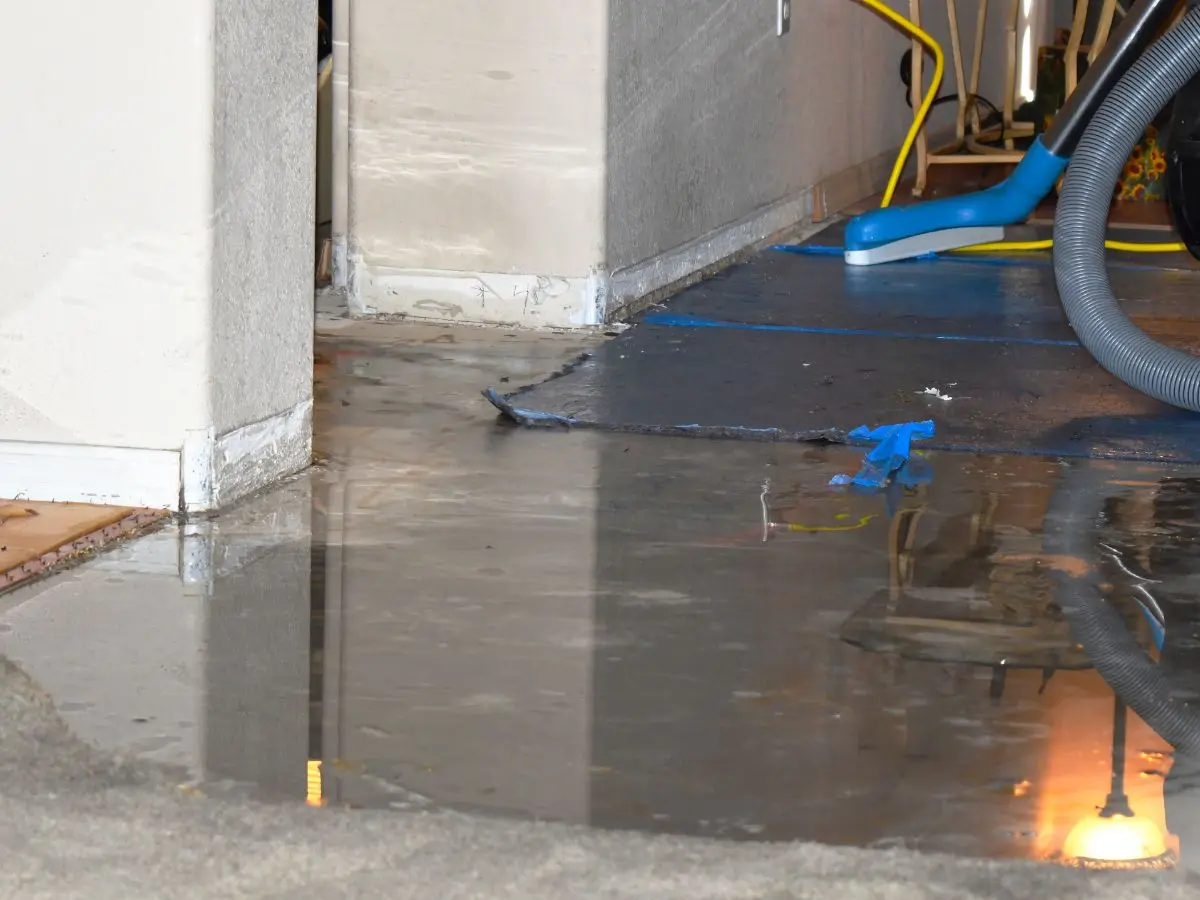
Tips to Preventing Water Damage
Regular Home Inspection and Maintenance
Consistent home inspections and maintenance are vital in mitigating the risk of water damage. This includes promptly addressing any detected leaks.
Your gutters, a crucial component in water damage prevention, should be kept free from obstructions. Regular checks of your plumbing systems, gutters, and downspouts can help you identify and rectify issues before they escalate.
Protecting Your Property with Weatherproofing
For those residing in areas susceptible to flooding or heavy rainfall, additional measures are necessary. Ensuring the ground adjacent to your house slopes away from your foundation wall can aid in directing water away from your property.
Plumbing Checks and Upgrades
Routine plumbing inspections can help identify issues before they become critical, potentially saving you money. A comprehensive plumbing inspection checklist can ensure nothing is overlooked during preventative maintenance checks and seasonal inspections. This includes checking walls and ceilings for stains, ensuring the water system is watertight, inspecting faucets for damage and leaks, and checking water drains for blockages.
Awareness of Environmental Factors and Changes
Understanding environmental factors and changes can also aid in water damage prevention. For instance, if your yard slopes towards your home and re-grading isn’t an option, consider planting vegetation around your home to absorb excess water.
Monitoring your water bill for unusual increases can also be indicative of a leak or other issue that requires attention.
Lastly, being prepared for unforeseen circumstances is crucial. A well-devised emergency response plan can be invaluable when dealing with water damage incidents.
Safeguarding Your Property against Water Damage
The threat of water damage isn’t just a possibility, it’s real and can hit when you least expect it, creating significant challenges for your home or business. By equipping yourself with the right knowledge and tools, you’ll be able to prevent and manage such situations effectively. Regular inspections, timely maintenance, and smart investments in water defence mechanisms like water alarms and sump pumps can strengthen your property’s defences. Remember, prevention’s always the best policy, and spotting the signs early is the key to reducing the impact of water damage. By staying aware, vigilant, and prepared, you’re protecting your home or business from the financial and structural fallout of water damage.

